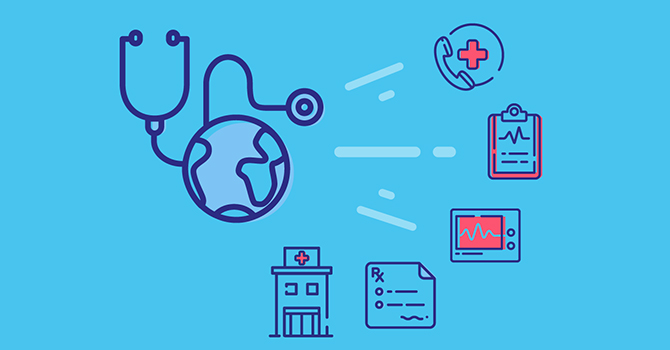Exactly How Healthcare RCM Solutions Streamline Payment and Collections
Exactly How Healthcare RCM Solutions Streamline Payment and Collections
Blog Article
A Comprehensive Guide on How Health Care RCM Works to Improve Billing and Collections
Browsing the intricacies of health care profits cycle administration (RCM) is crucial for service providers aiming to boost their payment and collections processes. The guide unboxes the ins and outs of RCM, from client enrollment to receivables administration, using understandings into maximizing each action. Integrating advanced modern technology and standard treatments can substantially decrease case denials and speed up payment cycles. Yet, truth difficulty hinges on flawlessly combining these components to enhance money flow. As we explore the core parts and techniques that drive effectiveness, one concern continues to be: exactly how can medical care entities best position themselves to grow financially in an ever-evolving industry?
Understanding Profits Cycle Management
Understanding the details of Revenue Cycle Monitoring (RCM) is vital for healthcare organizations intending to maximize their financial efficiency. RCM is a critical management feature that incorporates the whole monetary process of client treatment, from the first visit setting to the last settlement of the balance. It is a complicated procedure developed to recognize, collect, and take care of the income from the services supplied to patients. Reliable RCM makes sure that doctor obtain precise and prompt repayments, decreasing the danger of earnings loss and improving cash money flow.
The RCM procedure begins when a client routines a visit and extends via the individual's care trip, including payment and collections. A key goal is to decrease the time in between offering a solution and receiving settlement, hence boosting the organization's financial wellness. RCM includes numerous features such as person enrollment, insurance coverage confirmation, fee capture, coding, asserts submission, settlement posting, and handling rejections and charms.
Trick Parts of RCM
In the world of Income Cycle Administration (RCM), recognizing its essential components is fundamental to accomplishing economic efficiency within healthcare organizations. RCM is a detailed process that encompasses different stages, each essential to making certain efficient invoicing and collections. The main components include individual enrollment, insurance coverage verification, charge capture, coding, insurance claim submission, repayment posting, and receivable administration.


When coded, cases are submitted to payers, where precision is critical to prevent hold-ups or denials - Healthcare RCM. Payment publishing entails recording the received payments, which enables the settlement of accounts. Last but not least, receivables monitoring concentrates on tracking and attending to unsettled insurance claims, making certain prompt follow-up and resolution
Each part of RCM is adjoined, and inadequacies in any part can interfere with the whole cycle. As a result, grasping these aspects is necessary for healthcare suppliers to enhance income and enhance their financial health and wellness.
Techniques for Efficient Payment

Standardizing billing treatments across the organization is an additional crucial method. Developing clear standards for paperwork, coding, and submission aids keep consistency and he said conformity with regulative needs. Training team on a regular basis on these treatments makes sure everybody is updated with the current changes in billing codes and payer plans.
Accurate fee capture is important in stopping income leak. Implementing routine audits and monitoring systems permits for the identification and correction of discrepancies prior to they affect profits. Furthermore, preserving open lines of interaction with payers helps to swiftly fix any type of disagreements or misunderstandings that might emerge.

Lastly, engaging individuals early in the billing procedure by supplying clear price quotes and instructional products concerning their financial obligations can substantially minimize confusion and improve payment timeliness. These techniques collectively add to an extra monetarily healthy and balanced and reliable invoicing system.
Enhancing Collections Procedures
A robust collections process is essential for preserving economic security within medical care organizations. Provided the intricacies of clinical invoicing and the selection check this site out of payer requirements, improving the collections process entails carrying out tactical actions that ensure precise and timely settlement of services provided. Central to this is the use of innovation to automate and simplify processes, decreasing hands-on errors and boosting efficiency. Automation tools can assist in tracking insurance claim statuses, sending out timely reminders to individuals, and handling rejections much more efficiently.
Educating staff to understand the nuances of insurance plans and invoicing codes is just as important. This knowledge equips them to deal with billing disparities rapidly and communicate efficiently with individuals concerning their financial duties. Additionally, clear and clear client communications are crucial. Providing thorough descriptions of charges and providing flexible layaway plan can boost person contentment and timely settlements.
Regular audits of the collections procedure ought to be carried out to identify locations for improvement and make certain conformity with guidelines. By evaluating information, healthcare companies can recognize patterns, anticipate prospective issues, and adjust methods accordingly (Healthcare RCM). Eventually, a well-enhanced collections procedure not just supports monetary wellness however additionally adds to a more smooth experience for people and staff alike
Optimizing Profits Streams
Building upon the foundation of a strong collections process, medical care companies can additionally bolster their economic security by strategically enhancing profits streams. This includes a multi-faceted technique, starting with a detailed analysis of existing earnings sources to determine inadequacies and areas for development. Employing advanced data analytics tools makes it possible for organizations to get understandings right into payer mix, client demographics, and solution usage patterns, permitting for data-driven decisions that improve profits capture.
Implementing automated invoicing systems can dramatically minimize mistakes and accelerate cases refining, making certain that income is gathered a lot more helpful hints more successfully. Additionally, maximizing payer agreements via normal arrangements can improve reimbursement rates and terms, straight influencing the lower line. Branching out service offerings, such as including telehealth or wellness programs, can additionally bring in a more comprehensive patient base, thus boosting profits capacity.
Another important part is boosting person involvement and contentment, as pleased patients are most likely to stick to treatment strategies and make prompt settlements. Providing flexible payment options and clear invoicing practices can boost collections and foster patient commitment. Healthcare RCM. By embracing these techniques, medical care companies can produce a more durable financial framework, ensuring continual growth and security in an ever-changing industry landscape
Conclusion
In verdict, health care Earnings Cycle Administration (RCM) plays a crucial duty in enhancing payment and collections processes by incorporating vital elements such as person registration, insurance verification, cost capture, coding, claims submission, and accounts receivable management. By using advanced modern technology, standardizing procedures, and cultivating patient interaction, medical care suppliers can substantially reduce insurance claim rejections, speed up payment cycles, and enhance capital. This comprehensive technique to RCM inevitably results in improved monetary effectiveness and sustainability for healthcare organizations.
The RCM process starts when a patient timetables an appointment and expands with the person's treatment trip, consisting of billing and collections.One more critical component is improving individual involvement and complete satisfaction, as pleased individuals are extra most likely to adhere to treatment plans and make prompt payments. Providing adaptable payment choices and clear invoicing techniques can enhance collections and foster client commitment.In final thought, healthcare Earnings Cycle Monitoring (RCM) plays a vital function in enhancing billing and collections processes by incorporating crucial elements such as individual enrollment, insurance coverage confirmation, cost capture, coding, declares entry, and accounts receivable monitoring. By employing innovative modern technology, standardizing treatments, and cultivating patient interaction, healthcare providers can dramatically decrease case rejections, increase repayment cycles, and boost cash money flow.
Report this page